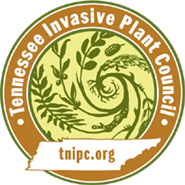Bromus japonicus Thunb. ex Murr.
Bromus japonicus Thunb. ex Murr.Field Brome, Japanese Bromegrass
| Category |
|---|
| Grass |

Description
Stem
Stems of Japanese brome can reach 3 feet (1 m) in height. They are erect, though often bending and rooting at lower nodes. Stems are round in cross section with hollow internodes. Stem nodes are often swollen or brittle.Leaves
Leaves blades are flat, covered with soft, thin hair and are 1.6-9.4 inches (4-24 cm) long and 0.08-0.28 inches (2-7 mm) wide. Leaf sheaths are covered with dense, soft hairs.Flowers
Inflorescences are open panicles that are 7-12 inches (17-30 cm) long and 2.4-5 inches (6-13 cm) wide. Lower panicle branches are drooping at maturity. Spikelets each have 5-10 flowers and are 0.8-1.3 inches (2-3.2 cm) long (including the awns). Awns are 0.25-0.75 inches (6-19 mm) long, somewhat twisted and widely spreading at maturity.Fruit
The caryopsis (fruit) is ellipsoid, 0.28-0.3 inches (7-8 mm) long, longitudinally grooved and hairy at the top.Images
Photo: Richard Old, XID Services, Inc., Bugwood.orgMore images of Bromus japonicus or Bromus arvensis
Life History
apanese Brome is a member of the Poaceae (Grass) family. It is a cool season, annual grass that germinates in the fall then overwinters as a rosette. Plants continue to grow in early spring. Early establishment helps Japanese brome out-compete desirable vegetation for water and soil nutrients.Habitat
Japanese Brome occurs on a wide variety of soils that include sand, silt and clay, but it thrives on fine textured soils. It commonly occurs in waste areas and disturbed sites such as roadsides and pastures, but it also is common in native rangelands and mixed prairie communities.Origin and Distribution
Japanese Brome is native to Europe, but has been reported all 48 of the contiguous United states and all adjacent Provinces in Canada.Bibliography
Bryson, C.T. and M.S. DeFelice, Eds. 2009. Weeds of the South. University of Georgia Press, Athens, GA. 468 pp.High Plains Integrated Pest Management. 2010. Japanese brome. Center for Invasive Species and Ecosystem Health, University of Georgia. http://wiki.bugwood.org/HPIPM:Japanesebrome (accessed 01 February, 2011).
Koepke-Hill, B., G. Armel, R. Richardson and N. Rhodes. 2010. Invasive Weeds of the Appalachian Region. Joint publication of University of Tennessee Extension, North Carolina State University Extension, USDA, CSREES and The Southern IPM center. 76 pp.
USDA, NRCS. 2010. The Plant Database, PLANTS profile for Bromus arvensis (field brome). National Plant Data Center, Baton Rouge, LA http://plants.usda.gov (accessed 01 February, 2011).
Management Recommendations
Mechanical Controls
Hand Pulling: Very small infestations (< 0.25 acre) can be effectively hand pulled. Hand-pulling must be closely monitored and re-pulled on an annual basis until new plants are no longer found.Cutting: Cutting or mowing can be effective if conducted while the flowering head is still enclosed within the sheath; however, the disturbance associated with mechanical control methods can also favor growth of Japanese brome.
Prescribed Burn: Prescribed burns can be effective for control of Japanese brome, but are dependent on growing season and precipitation, and must be repeated within 2-5 years after the first burn.
Herbicidal Controls
NOTE: Japanese brome is a cool season grass and often appears before more desirable grasses in early spring. Consequently, use of contact herbicides early in the spring will be less likely to affect desirable vegetation.Foliar Spray Method: Glyphosate -- Apply a 2% solution of glyphosate and water plus a non-ionic surfactant to thoroughly wet all foliage. Do not spray to the point of runoff. Ambient air temperature should be above 65°F to ensure translocation of the herbicide to the roots. Do not apply if rainfall is expected within two hours following application. NOTE: Glyphosate is a non-selective herbicide (i.e. it kills any green plant). Use extra caution to avoid getting chemical spray on any non-target species. Refer to manufacturer’s label for specific information and restrictions regarding use.
Sethoxydin -- Apply a 1.5% solution of sethoxydin and water plus a non-phytotoxic, vegetable-based oil to thoroughly wet all foliage. Do not spray to the point of runoff. Ambient air temperature should be above 65°F to ensure translocation of the herbicide to the roots. Do not apply if rainfall is expected within one hour following application.
Other post-emergent herbicides recommended for control of Japanese brome include sulfosulfuron, at 1 ounce active ingredient/acre, fluazifop at 2 fluid ounces active ingredient/acre, and imazapyr at 8.5 fluid ounces active ingredient/acre.
